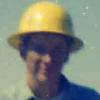Leaderboard
Popular Content
Showing content with the highest reputation on 09/01/20 in all areas
-
! Moderator Note We have certain requirements for discussion of speculative ideas, and your posts fall well short. This is a science discussion site, meaning there needs to be some scientific basis for the discussion. Your ideas seem to have been pulled out of...an alternate dimension. Don't bring this topic up again.3 points
-
2 points
-
That image sure looks like a 'sombrero' to me , unfortunately any symmetry break is a 'fall' from an unstable false potential to a lower ( more ) stable one. This vacuum energy has to go somewhere, and usually it leads to an inflation. I can't see the electroweak symmetry break not leading to an inflationary period. And of course by radiation dominated, I mean only massless particles, so definitely before baryogenesis and the plasma era ( maybe I'm using the term 'radiation dominated' wrong ). Those are some of the reasons why I say 'makes sense to me'.1 point
-
Everything we can detect is within the observable universe. Beyond the last scattering surface, the universe is opaque to radiation and we can't see anything, except maybe with gravitational waves; and beyond that, not even with gravitational waves. I agree that local objects bend space, but on average the universe looks very (spatially) flat. Around black holes and very massive objects you can detect local curvature, like e.g. Einstein rings, but the sphere of the sky looks pretty flat overall. What the paper that @iNow has linked to seems to imply is that within the observable universe the telescopes have detected large-scale lensing that must have to do with curvature within the horizon. That's what's very surprising to me. I'd like to follow up on that.1 point
-
But inflation corresponds to slow-roll down the hill, so that's previous to reheating, and thereby previous to plasma epoch, baryogenesis, radiation-dominated epoch and everything else. The super-stretching is always previous to big-bang cosmology. And the inflaton looks nothing like a Higgs potential (Mexican hat). It's a completely different animal: Although there are other models. But the parts of the graph that has received good confirmation is the part with a gentle slope and the steep fall. The breaking of the symmetry that we commonly associate with the acquisition of mass came much later. After re-heating. V(phi) is the potential and phi is the inflaton. The V(phi) for the Higgs is very different: Online lectures that I found very useful to understand how the inflaton is very different from other scalar fields are (Lenny Susskind, Stanford): https://www.youtube.com/watch?v=gdFldkitkJA&list=PLvh0vlLitZ7c8Avsn6gUaWX05uD5cedO-&index=8 1h 15' 12'' to the end And then: https://www.youtube.com/watch?v=gdFldkitkJA&list=PLvh0vlLitZ7c8Avsn6gUaWX05uD5cedO-&index=8 The Higgs potential is a static situation. The inflaton dynamics, on the other hand, is analogous to the dynamics of a body falling under viscous drag. And the Hubble parameter plays the role of the friction.1 point
-
And if Farid learned just how those illusions are done, I doubt he'd be impressed either. (Want to disappoint someone? Tell them how you did the trick that just "blew their mind".1 point
-
The graphics INow posted on Jul26 are 2D reductions of 4D space-time. ( in 4D those three graphics would be expanding in size also as time passes ) The 'observable' universe for a 'flatlander' living in one of those three universes, would be a circle, NOT a sphere. The curvature depicted by those graphics is 'global' curvature, NOT 'local' as you would have in the neighbourhood of planets, stars, galaxies or even clusters. Homogeneity/isotropy means the same and in all directions; if it changes outside the observable universe then it can't be homogeneous and isotropic. But as Stringy says, why would it ?1 point
-
The 'observable universe' is an observer-dependent limitation centred around where they are located. Why should things be different outside of that field of view?1 point
-
Sure, but you have to provide the energy. That's what's happening when you hit a proton with an energetic particle. You put in the required energy for some of these virtual particles to persist. In the inflationary theory it's the inflaton field that provides that energy. But my next question would be: What's the status of the inflaton field? Is itself a quantized field, with quanta? Why wasn't it in a superposition of states when all that transition happened? I think there are possible answers to that. For example, superselection rules, which are strict prohibitions for superpositions of different quantum numbers to exist. But the whole thing becomes more and more contrived... The inflaton field is acting like the physical element that defines the fate of these fluctuations. It's kind of jerry-built. Successful, useful, very impressive to be sure, but it doesn't give you anything like this feeling of inevitability that you normally demand of fundamental theories. Like something remains to be understood.1 point
-
Pure vegetable oil is usable in diesel engines. That does require oxygen (as noted by Sensei). Ignition under those conditions is achieved a t 15-120 atm. For ignition or decomposition without oxygen it will depend on temperature as well as pressure-- so there is no single correct answer. While I do not know for certain. I suspect that since the oil is essentially not compressible, it will not significantly heat up as it is compressed and therefore high pressure alone will neither cause it to ignite nor decompose.1 point
-
This is actually, IMO, an outstanding question, because I haven't the faintest idea how you would apply the principles of the quantum theory of measurement to the vacuum. I don't suppose you can do that. Certainly, as there were no real particles, only those ephemeral virtual states, how did something actually happen? Nothing would qualify as an observer or as an apparatus. Decoherence is not it, IMO, because I don't know of any instance in which the vacuum can be argued to bring about decoherence and thereby qualifying as producing a measurement. This is a part of the quantum theory of measurement that's slipped into oblivion: the problem of the pointer positions. What physical tag says that something, and not something else, has actually happened? What tips the arrow? If anybody knows of any answer to that I would be the first to thank them, because I've longed to know for more than 20 years. It was very frequently referred to in the old papers and books about measurement, but no longer is. Old papers and books: https://press.princeton.edu/books/hardcover/9780691641027/quantum-theory-and-measurement1 point
-
I can't make heads or tails of this statement. It takes on the properties of time and is therefore without time?!?! What does that mean? So when I turn off the bedside lamp I suddenly become waves/frequency? We only exist in the fourth dimension? How are you defining "dimension"? Like length/width/height/time? Or like "You unlock this door with the key of imagination. Beyond it is another dimension: a dimension of sound, a dimension of sight, a dimension of mind. You're moving into a land of both shadow and substance, of things and ideas; you've just crossed over into the Twilight Zone."1 point
-
This is a question of Chemistry, not Physics. In order to understand what was going on at that time it is necessary to know that Avogadro was contradicting two Scientists who Wikipedia label as the founders of modern Chemistry, Dalton and Berzelius. They were proponents of Dalton's atomic theory did not acknowledge molecules, but held that in a chemical reaction one atom of A combined with one atom of B to give one atom of C. Dalton and Berzelius made great advances in chemistry but they did not accept molecules so when Avogardro made his hypothesis they fought tooth and nail against and as the great men of their day, this held back progress for nearly half a century. Note Avogadro did not call his hypothesis a Law, but merely stated that if solved the apparent problem of measuring chemical composition by volume. He starts his paper thus (English translation) In turn Gay Lussac had written from experimental evidence Now it was known that I volume of hydrogen + 1 volume of chlorine yields 2 volumes of hydrogen chloride. Dalton proposed that each volume of reactant and product contained the same number of atoms of their respective gases so n atoms of hydrogen + n atoms of chlorine yield 2n particles of hydrogen chloride. 1 atom of hydrogen + 1 atom of chlorine yield 2 particles of hydrogen chloride. But each particle of hydrogen chloride must contain some hydrogen and some chlorine. So the only way this can be true is if the atoms split into parts, which is contrary to Daltons definition of an atom as the smallest indivisible particle. The same difficulty was encountered with other known gaseous reactions such as hydrogen and oxygen, hydrogen and nitrogen, oxygen and nitrogen. Avogadro's paper proposes that if in some gases atoms are joined together into larger particles, containing two or more atoms such that these larger particles, he called molecules, are substituted for atoms in Dalton's proposal Gay-Lussac's Law is automatically satisfied for both reactants and products. He then makes his famous hypothesis He also states that following this hypothesis : the ratio of the weights of equal volumes of two gases A and B must be the same as the ratio of the weight 1 molecule of A to 1 molecules of B. The job was not completed until 1858 by Cannizzaro who extended this to atomic masses. Not sure why so are so deeply interested (but I am pleased someone is). The really important thing Avogadro 'discovered' was the molecule as distinct from the atom and linked this to the connection between weight and volume. There is a really good book about all this by a top notch Chemist called Chasing the Molecule John Buckingham Which is the history (with good scientific explanations) of molecules and chemical formulae in general.1 point
-
Interesting question as today we derive Avogadro's Hypothesis (as it was originally called) from the kinetic theory following Maxwell's theoretical derivation. Avogadro himself used a different route. He was concerned with chemical reactions between gasses and explaining the simple relationship between the volumes of gasses entering into chemical combination. Note he said molecules, not atoms. He suggested that the densities of these reacting gasses, under the same conditions of temperature and pressure are in the ratios of their respective masses of their molecules. From this it follows that they are in the same ratios as their molecular masses (then called molecular weights). Since these are all relative to a standard gas (eg taking oxygen as 16) the hypothesis follows for equal volumes.1 point
-
I think he saw a trend in experimental results (his paper is listed in the footnotes here https://en.wikipedia.org/wiki/Avogadro's_law and there's an English translation in #2) It's also true that his work was after the formulation of Boyle's law, PV = constant (1662), Charles's law, V/T = constant (1787) and Gay-Lussac's law, P/T is constant (1808) So it seems he was extrapolating that these laws are all dependent on the number of atoms in the sample being constant, and the variables would vary in proportion if you changed the number of molecules.1 point
-
! Moderator Note It takes a certain amount of chutzpa to say you are going to design a fusion reactor without knowing much in the way of physics. If you are going to post speculations, you must follow our speculations rules. If you are asking physics questions, stick to asking questions, and not delving into speculations.1 point
-
The python documentation uses the word dictionary to describe variables ithat are key-value pairs. The dictionary is defined here. d={'col1': [1, 2], 'col2':[3, 4]}1 point
-
logic001 has been banned as a sockpuppet of Trần Thành and Energizer edit: also the craftily-named logic002 edit2: and logic0031 point
-
I'd be more impressed by magician's intelligence if all of their tricks were actually an illusion and not really happening.-1 points










